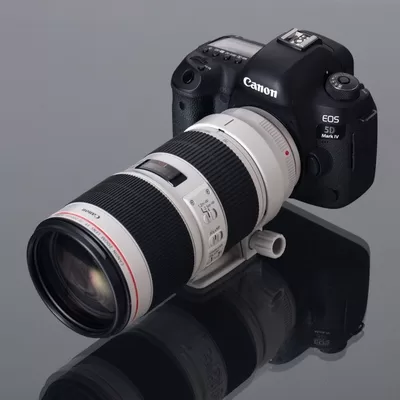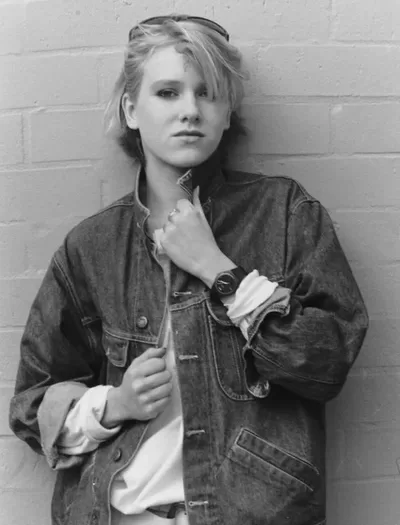Corporate Photographer’s Essential Checklist for Annual Reports, Brochures, and Advertising Assignments
Corporate photography encompasses a diverse range of projects, from annual reports to brochures and advertising campaigns. As a corporate photographer, it’s crucial to be well-prepared and equipped with the right gear and essentials to deliver high-quality images that meet the needs and expectations of your clients. In this blog post, we’ve curated an essential checklist to help corporate photographers navigate assignments for annual reports, brochures, and advertising with confidence and professionalism.
1. Camera Gear
We have different cameras for different jobs. Our mirrorless Nikon Z is perfectly quiet to make photos in a conference or live event, and for general street photography or when candid people photos are needed.


We use a Canon 5dMkIV with 70-200mm lens, the general workhorse of many photojournalists in a news situation, and often carry a second Canon for video and wide angles.
We can shoot 4K movies and save any frame as a beautifully detailed 8.8-megapixel still image. The 85mm “Art” lens is perfect for more formal portraits.
- DSLR or mirrorless camera body with a full-frame sensor for exceptional image quality
- Variety of lenses to capture different perspectives and compositions (e.g., standard zoom, wide-angle, telephoto)
- Lens hood and lens caps to protect your lenses from dust and debris
- Lens cleaning kit (microfiber cloth, lens cleaning solution) to maintain clear and pristine optics
- Spare camera batteries and charger for extended shooting sessions
- Memory cards with ample storage capacity for capturing high-resolution images
2. Portable Lighting Equipment
After years of using cumbersome Elinchrom studio lights, which are perfect for the full-time studio, we’ve recently been using portable, battery powered LED lights. At one-tenth the price, they are cheaper for the client, lighter to carry, smaller and easier to use and accessorise with hoods, softboxes and filters.
- Portable lighting equipment such as LED continuous lights for controlled lighting in indoor and outdoor settings
- We have two Speedlites flashes for extreme portability
- Light modifiers (e.g., softboxes, umbrellas) to soften harsh light and create flattering shadows
- Reflectors for bouncing and enhancing natural light
- Tripod or monopod for stability and long-exposure shots, especially in low-light conditions
- Portable backdrop system for studio-style setups on location
3. On-Location Essentials
Each location and type of photograph needed requires thought as to the equipment and props needed. Do you need a tripod or will a monopod on location do the job?
- Tripod or monopod, as required
- Lightweight and weather-resistant camera bag or backpack with padded compartments for organizing and protecting your gear
- Comfortable clothing and footwear suitable for indoor and outdoor shooting
- Smartphone with essential communication apps (e.g., messaging, email) for staying in touch with clients and colleagues
- iPad for editing photos on location and uploading to waiting media
- Notebook and pen for jotting down important details, shoot notes, and client preferences
- Filters, ND, polarisers, should be on the camera or in roll up pouches
- Portable chair or stool for comfort during long shoots (enough for everyone)
- Cleaning kits, pack a few kits of cloths and brushes: in your pocket, in the main trunk and in any portable camera bags
- A basic toolbox with gaffer tape, sharp knife, pliers and screwdrivers to suit the equipment
- A basic model kit of hair scissors, foundation and eye liner, Indian bindis & adornments
- Roadie cases or Trunks that fit the back of your car. We have one box for Lights, another for Cameras, and another for Action – for the model’s or set props. Gear can be transported from the car to the location in smaller camera bags
4. Post-Production Tools
- Tablet, laptop or computer with photo editing software (e.g., Adobe Photoshop, Lightroom) for post-processing and retouching
- Plug in portable modem or other device to connect your photo editor to the internet
- External hard drive or cloud storage for backing up and storing image files securely
- Portable external batteries for computer, plus all cables, chargers, camera & light batteries
- Color calibration tools to ensure accurate color reproduction and consistency across images (this should be done in the studio)
- Monitor hood or glare shield for optimal viewing conditions during editing and retouching
5. Documentation and Communication
- Model release forms and contracts outlining terms and conditions of the photoshoot agreement
- Client briefs, shot lists, and mood boards to ensure alignment with the client’s vision and objectives
- Contact information for key stakeholders, including clients, art directors, and project managers
- Put the local police in your phone’s speed dial, and also your insurance company, doctors and lawyers
- Release forms and permissions for shooting in certain locations or using props and equipment
- Travel documents including carnet summary of your gear with serial numbers.
6. Safety and Security
- Personal safety equipment such as reflective vests or helmets for shooting in high-traffic or hazardous areas
- Emergency contact information for local authorities, medical services, and contacts in case of emergencies
- Travel insurance to protect yourself and your gear against loss, theft, or damage during travel
- TSA-approved locks or cable locks for securing your camera bag or equipment when not in use
As a corporate photographer, being well-prepared and equipped with the right gear and essentials is essential for success in delivering high-quality images for annual reports, brochures, and advertising campaigns.
By following this checklist and incorporating valuable tips, you’ll be well-equipped to tackle any corporate photography assignment with confidence, professionalism, and creativity. So pack your bags, charge your batteries, and get ready to capture stunning images that tell compelling stories and elevate your client’s brand. Happy shooting!
Related stories
Mark Anning Fashion Photography Portfolio – We do fashion photography for small retailers, designers and labels, magazines, models. We treat this seriously and our budget includes a chaperone, my assistant/stylist. All model releases are available.


French wine lovers love Montmartre Grape Harvest Festival – Event coverage assignment for Magnum Photos course in Photojournalism & Documentary Photography.
The Phenomenon of Everyone’s a Photographer Now
Can I make money as a freelance photographer
The Rise of Smartphone Photography
Navigating the Future of Professional Photography
How Getty Images & Disruptors Changed Photography
National Institute of Dramatic Art (NIDA)
Guide to Collecting Vintage Film Cameras




![Stanley Kubrick career as a still photographer Stanley Kubrick's Park Benches - Love is Everywhere [Couple flirting on a fire escape], 1946.](https://1earthmedia.com/wp-content/uploads/2024/04/Kubrick004-350-238x178.webp)

